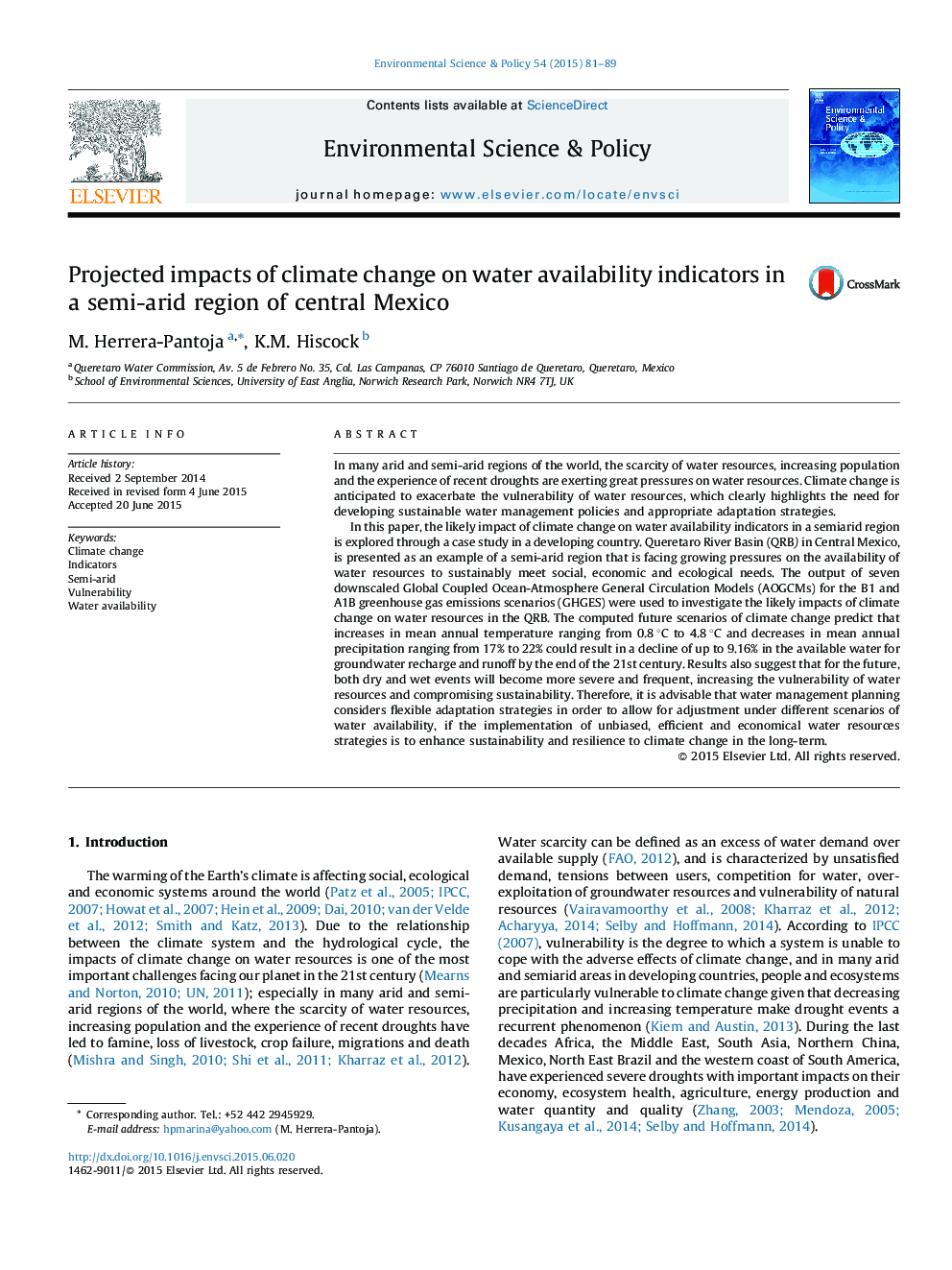| Article ID | Journal | Published Year | Pages | File Type |
|---|---|---|---|---|
| 7467186 | Environmental Science & Policy | 2015 | 9 Pages |
Abstract
In this paper, the likely impact of climate change on water availability indicators in a semiarid region is explored through a case study in a developing country. Queretaro River Basin (QRB) in Central Mexico, is presented as an example of a semi-arid region that is facing growing pressures on the availability of water resources to sustainably meet social, economic and ecological needs. The output of seven downscaled Global Coupled Ocean-Atmosphere General Circulation Models (AOGCMs) for the B1 and A1B greenhouse gas emissions scenarios (GHGES) were used to investigate the likely impacts of climate change on water resources in the QRB. The computed future scenarios of climate change predict that increases in mean annual temperature ranging from 0.8 °C to 4.8 °C and decreases in mean annual precipitation ranging from 17% to 22% could result in a decline of up to 9.16% in the available water for groundwater recharge and runoff by the end of the 21st century. Results also suggest that for the future, both dry and wet events will become more severe and frequent, increasing the vulnerability of water resources and compromising sustainability. Therefore, it is advisable that water management planning considers flexible adaptation strategies in order to allow for adjustment under different scenarios of water availability, if the implementation of unbiased, efficient and economical water resources strategies is to enhance sustainability and resilience to climate change in the long-term.
Related Topics
Physical Sciences and Engineering
Energy
Renewable Energy, Sustainability and the Environment
Authors
M. Herrera-Pantoja, K.M. Hiscock,
